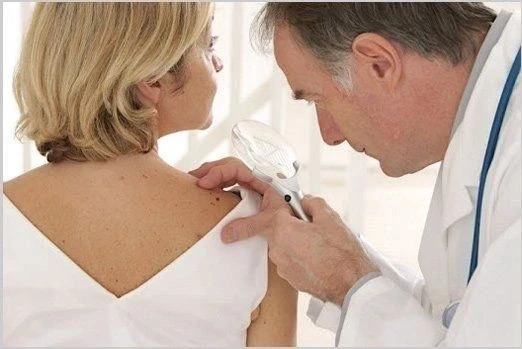When a Rash Doesn’t Go Away...A red patch appears on your neck. It’s itchy. You think maybe it’s the soap. So, you switch. A few days later, it’s back on your arms now. You try a cream. It helps for a moment. Then, the rash spreads.
At some point, the cycle becomes exhausting. When skin reacts without a clear reason—and over and over again—it’s no longer just sensitive skin. This is where Skin Allergy Diagnosis and Treatment can change everything.
But how? And does it actually help chronic rashes that just won’t quit? This blog unpacks exactly that. Keep reading to understand how real answers—not guesswork—might finally give your skin a break.
What Chronic Rashes Are Really Telling You?
Rashes that come and go, last for weeks, or continue to move around and appear in new spots—these are not normal. They might be your skin’s way of saying: Something deeper is wrong.
Common triggers include:
● Ingredients in your skincare
● Fabrics and dyes
● Metals in accessories
● Foods or pollen you’re exposed to daily
The problem? Most of these aren't obvious. That’s why surface treatments don’t work long-term.
Why Guessing Doesn’t Work?
Changing products endlessly or applying over-the-counter creams can be a step forward. However, without knowing what’s causing the rash, you're treating a reaction, not the root cause.
Some people spend months doing this. Others, years. The cycle repeats because the cause is still in your life—maybe in your laundry, your moisturizer, or even your breakfast.
Skin Allergy Diagnosis and Treatment stops the guesswork. It starts with real testing.
What Happens in a Real Diagnosis?
Proper diagnosis isn’t guesswork. It’s scientific, personal, and often eye-opening.
Here's what to expect:
● A complete lifestyle and skin history review
● Patch testing to find delayed skin reactions
● Prick or blood tests for food or airborne allergens
Some people are shocked by what shows up. A preservative in makeup. A metal in earrings. Even a plant in the backyard. Once the cause is found, the cycle finally starts to break.
When Skin Damage Needs More Than Creams
If your rash has been ongoing for months, there’s often residual damage, including roughness, dark spots, or thickened skin. Once your allergy is under control, healing can progress beyond symptom management.
That’s when the Best Skin Laser Treatment options step in. Lasers help fade marks, smooth uneven texture, and improve your skin’s tone after inflammation. But these should only follow diagnosis, not replace it.
Clearing the surface before solving the cause is like fixing a crack in the wall without repairing the leak behind it. Treat first, then restore. That's the wiser way to achieve long-term outcomes.
Laser doesn't cure the allergy, but it can help reverse the visible damage caused by years of irritation.
Where Most People Go Wrong?
The biggest mistake? Trying everything… except getting tested.
Here’s what usually happens:
● Try a new cream
● Cut dairy
● Avoid fabric softener
● Switch soaps again
Weeks go by. The rash stays. It’s not that nothing works—it’s that the cause hasn’t been identified. Without knowing the trigger, relief is temporary.
Skin Allergy Diagnosis and Treatment isn’t just about labeling the problem—it’s about removing it from your life completely.
What Makes Diagnosis Worth It?
It’s not just about the rash. It’s about everything the rash is affecting—sleep, confidence, energy, even clothing choices.
Benefits of proper diagnosis and care include:
● Longer periods of clear skin
● Less itching, flaking, and redness
● Fewer product purchases
● Skin that actually feels healthy, not just managed
Some who once relied on strong steroid creams for relief now live flare-free by simply avoiding one key ingredient or allergen.
Should You Get Tested? Here’s How to Know
Ask yourself:
● Does your rash return even after changing products?
● Does it worsen in certain places, seasons, or fabrics?
● Have creams and prescriptions provided only temporary relief?
● Does your skin sting or burn after using hypoallergenic items?
If yes, then this isn’t random—it’s reactive. Allergy testing could be the missing step. And skipping it might only prolong the cycle.
Clinics offering SRT Dermatology approaches often combine modern allergy testing with deep skin recovery strategies, making both identification and healing possible within a single care plan.
The Last Word: Chronic Doesn’t Have to Mean Forever
So many live with ongoing rashes, thinking it’s just part of their skin type. But in most cases, it’s not. It’s just unresolved. The skin is doing its job—warning you. But without the correct diagnosis, it’s a signal lost in translation.
Don’t keep guessing. Stop covering it up.
Skin Allergy Diagnosis and Treatment might be the most crucial choice you make for your skin’s future. Not just to stop a rash, but to finally stop wondering what’s wrong.


